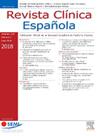广泛的单核细胞分布在重症患者败血症诊断中的作用
IF 1.7
4区 医学
Q2 MEDICINE, GENERAL & INTERNAL
引用次数: 0
摘要
背景:脓毒症在重症监护病房(ICU)的发病率和死亡率仍然很高。WBC、CRP和PCT常被用作脓毒症的检测工具;然而,它们都不是针对败血症的。本研究的目的是评估单核细胞分布宽度(MDW)是否对危重患者的早期脓毒症检测有用。方法前瞻性队列研究在某重症监护病房进行。在重症监护病房入院时,评估MDW、CRP、PCT和WBC以检测败血症。结果连续入组344例危重患者,分为无脓毒症(200例)、脓毒症(76例)和感染性休克(68例)。在假定组间无平均差异的情况下,ICU诊断为脓毒症患者的MDW显著高于非脓毒症组(29.7 [24.7-35.7]vs 20.4 [18.6-22.7]; P < .001)。与其他参数相比,MDW最能区分脓毒症与所有其他疾病(曲线下面积[AUC]: 0.877; 95% CI: 0.841 0.914),在截断点24时敏感性80.6,特异性84.5。经年龄、性别和SOFA评分调整的MDW与死亡率相关(OR: 1.056; 95% CI: 1.004-1.09; P < 0.01)。结论MDW的测定有助于ICU脓毒症的早期诊断,是影响脓毒症患者预后的重要因素。本文章由计算机程序翻译,如有差异,请以英文原文为准。
Utilidad de la amplitud de distribución de monocitos en el diagnóstico de sepsis en pacientes críticos
Background
The incidence and mortality of sepsis remain high in the intensive care units (ICU). WBC, CRP and PCT are frequently used as tools for sepsis detection; however, none of them is specific to sepsis. The aim of the current study was to evaluate whether monocyte distribution width (MDW) is useful for early sepsis detection in critically ill patients.
Methods
Prospective cohort study was conducted in a critical care unit. MDW, CRP, PCT and WBC were evaluated for sepsis detection at the time of intensive care unit admission.
Results
There were 344 critically ill patients enrolled consecutively and categorized as no sepsis (200), sepsis (76) and septic shock (68). MDW in patients with sepsis diagnoses in ICU was notably higher than non-sepsis group (29.7 [24.7-35.7] vs 20.4 [18.6-22.7]; P < .001) under the assumption of no mean difference between the groups. Compared to other parameters, MDW was the best to discriminate sepsis from all other conditions (area under curve [AUC]: 0.877; 95% CI: 0.841 0.914), sensitivity 80.6, specificity 84.5 at a cut-off point of 24. MDW adjusted for age, sex and SOFA score was associated with mortality (OR: 1.056; 95% CI: 1.004-1.09; P < .01).
Conclusion
The measurement of MDW is a tool that can help in the early diagnosis of sepsis in ICU settings and its value is a factor associated with the prognosis of septic patients.
求助全文
通过发布文献求助,成功后即可免费获取论文全文。
去求助
来源期刊

Revista clinica espanola
医学-医学:内科
CiteScore
4.40
自引率
6.90%
发文量
73
审稿时长
28 days
期刊介绍:
Revista Clínica Española published its first issue in 1940 and is the body of expression of the Spanish Society of Internal Medicine (SEMI).
The journal fully endorses the goals of updating knowledge and facilitating the acquisition of key developments in internal medicine applied to clinical practice. Revista Clínica Española is subject to a thorough double blind review of the received articles written in Spanish or English. Nine issues are published each year, including mostly originals, reviews and consensus documents.
 求助内容:
求助内容: 应助结果提醒方式:
应助结果提醒方式:


